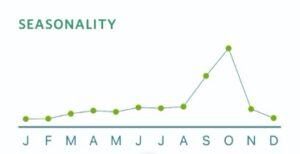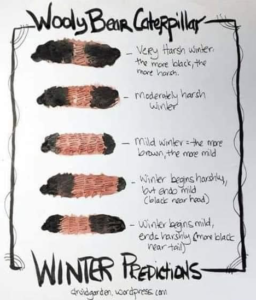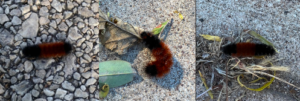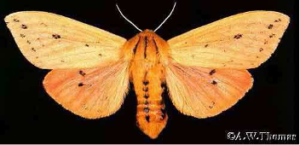DABB Bytes: Woolly Bear Caterpillar Edition
Happy Friday! This week we wanted to share an interesting and fun biological folklore that has been around since colonial times! A woolly bear caterpillar, a caterpillar that develops into a tiger moth, based off its coloration, withholds the potential of predicting the severity of the upcoming winter. This is especially relevant now as we are reaching the end peak times for observing these amazing creatures as shown through iNaturalist and visualized below!

Depending on where the caterpillar has its black and brown coloration (photographs of the caterpillars are shown below), we may be able to determine if and when mild and harsh weather will occur; below, from the Coulee Region Bug Watch, there is a helpful diagram that demonstrates this.

In reality, the coloration of these caterpillars is based off of the amount of time the caterpillar has been feeding, the age of the caterpillar, and the species; the better the growing season, the bigger a caterpillar will grow and the narrower the brown, middle section of the organism will be. This means that the coloration is an indicator of the caterpillar’s current or past season’s growth. When it comes to the age of a caterpillar, these organisms molt six times before they are considered full-grown, and with each molt comes more brown and less black coloration. The National Weather Service provides a great read on this topic: https://www.weather.gov/arx/woollybear?fbclid=IwAR0JSj1_37sqYGL4RLorSSS6X8jvTxXsFGgBrB94JlgjJbVIRYdrklad_AI
Now that you have a few resources to determine how these creatures hold the potential of deciding the fate of our winters, do you think you can determine what may be in store for us based on some of the below photographs taken just this past week by some of our DABB crew?

In addition, here are a couple of common examples of what these caterpillars grow up to be!

Isabella Tiger Moth

Garden Tiger Moth
We hope you remember to continue to keep an eye out for these interesting organisms and keep track to see if your winter predictions are accurate! Have a safe and happy Halloween weekend!